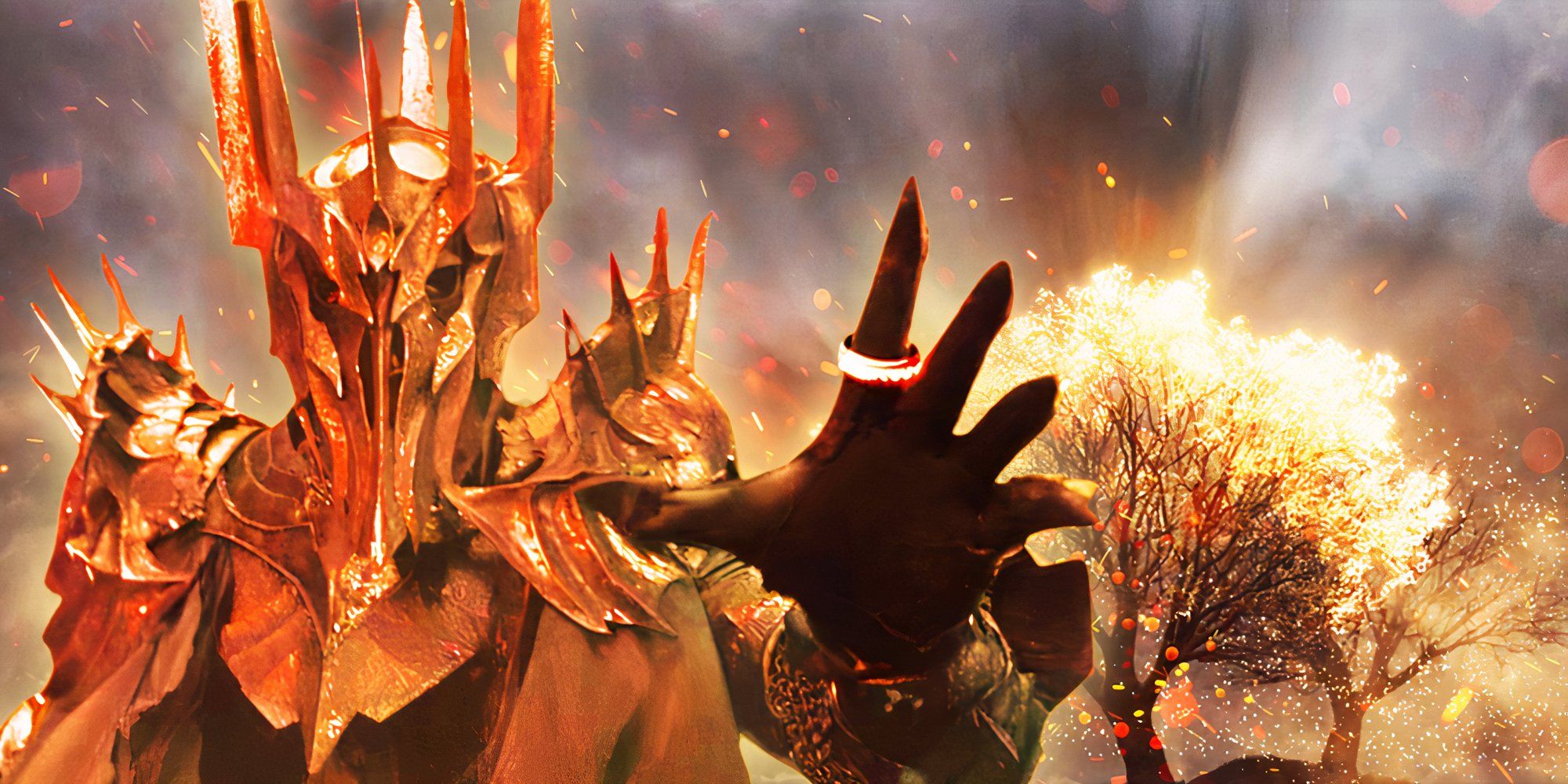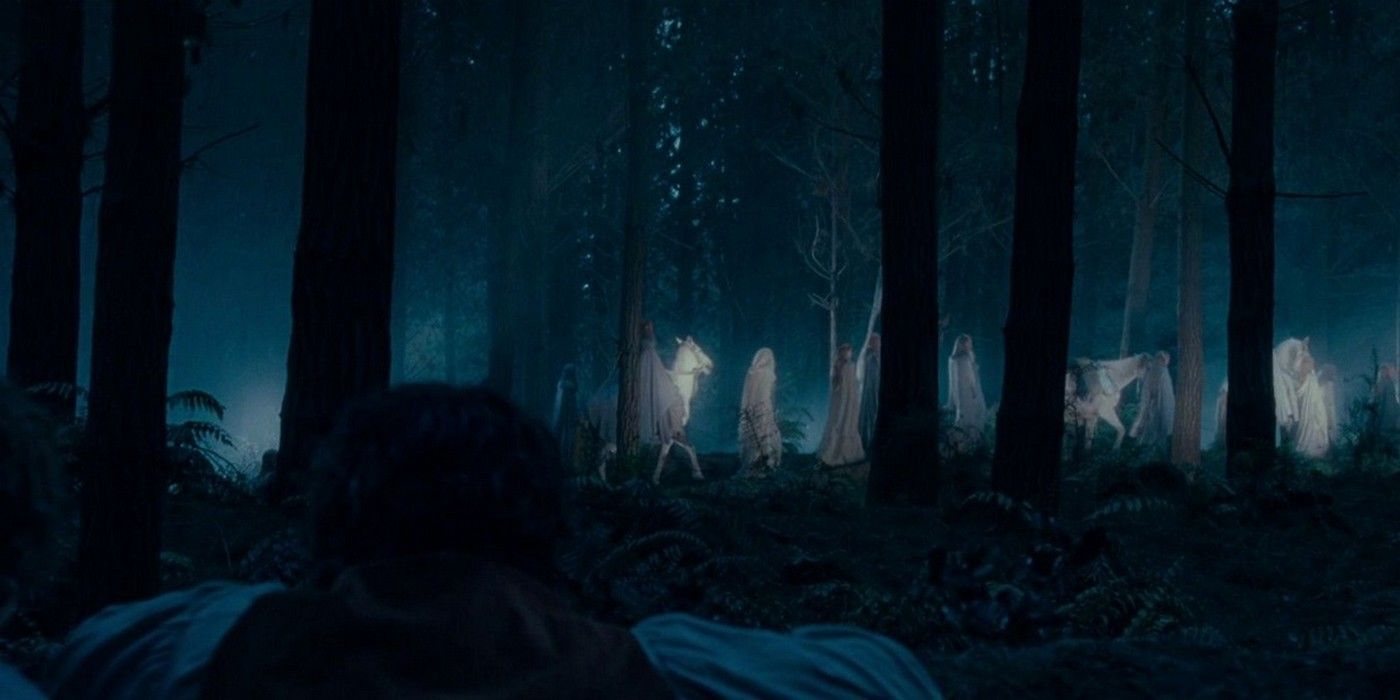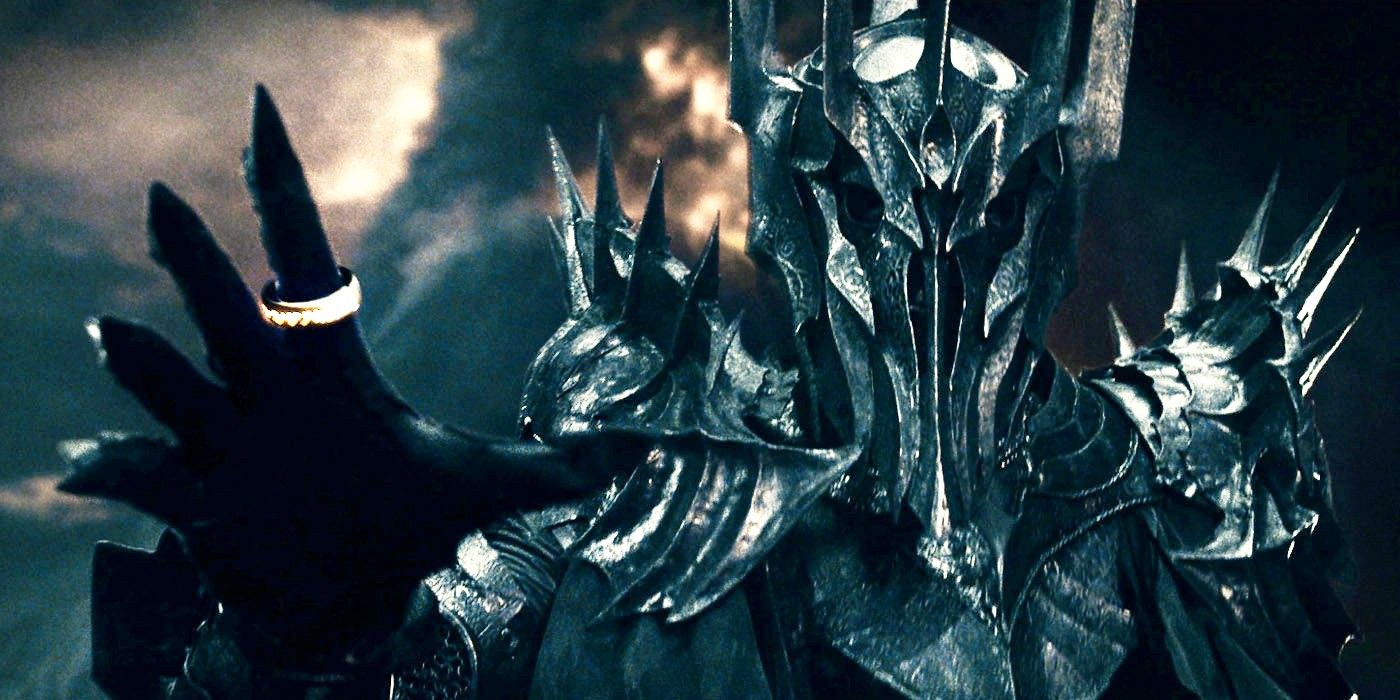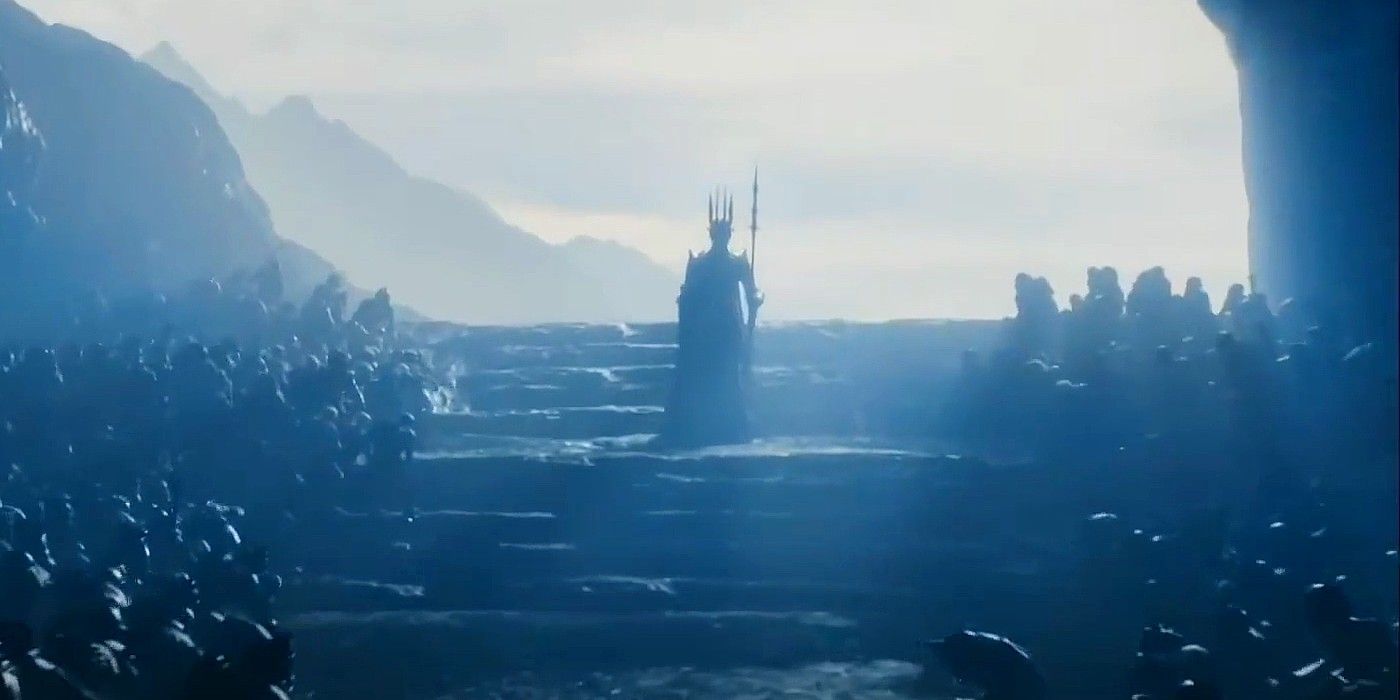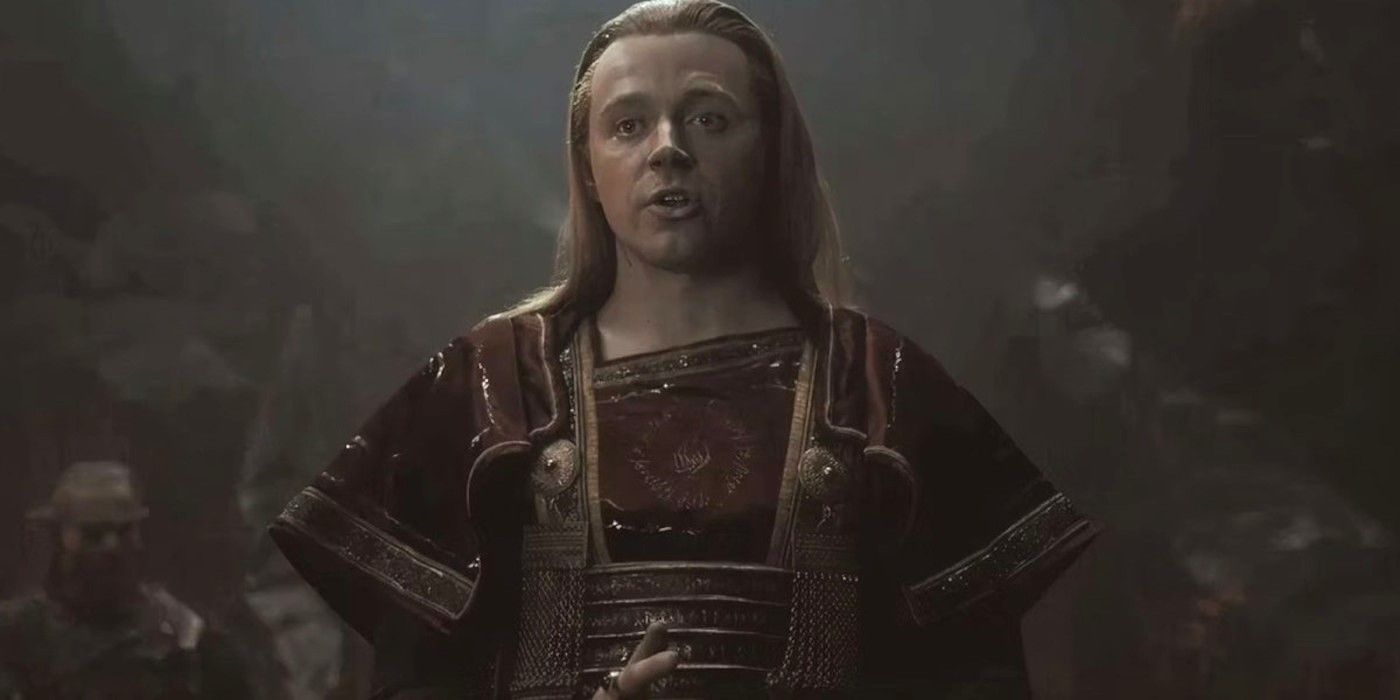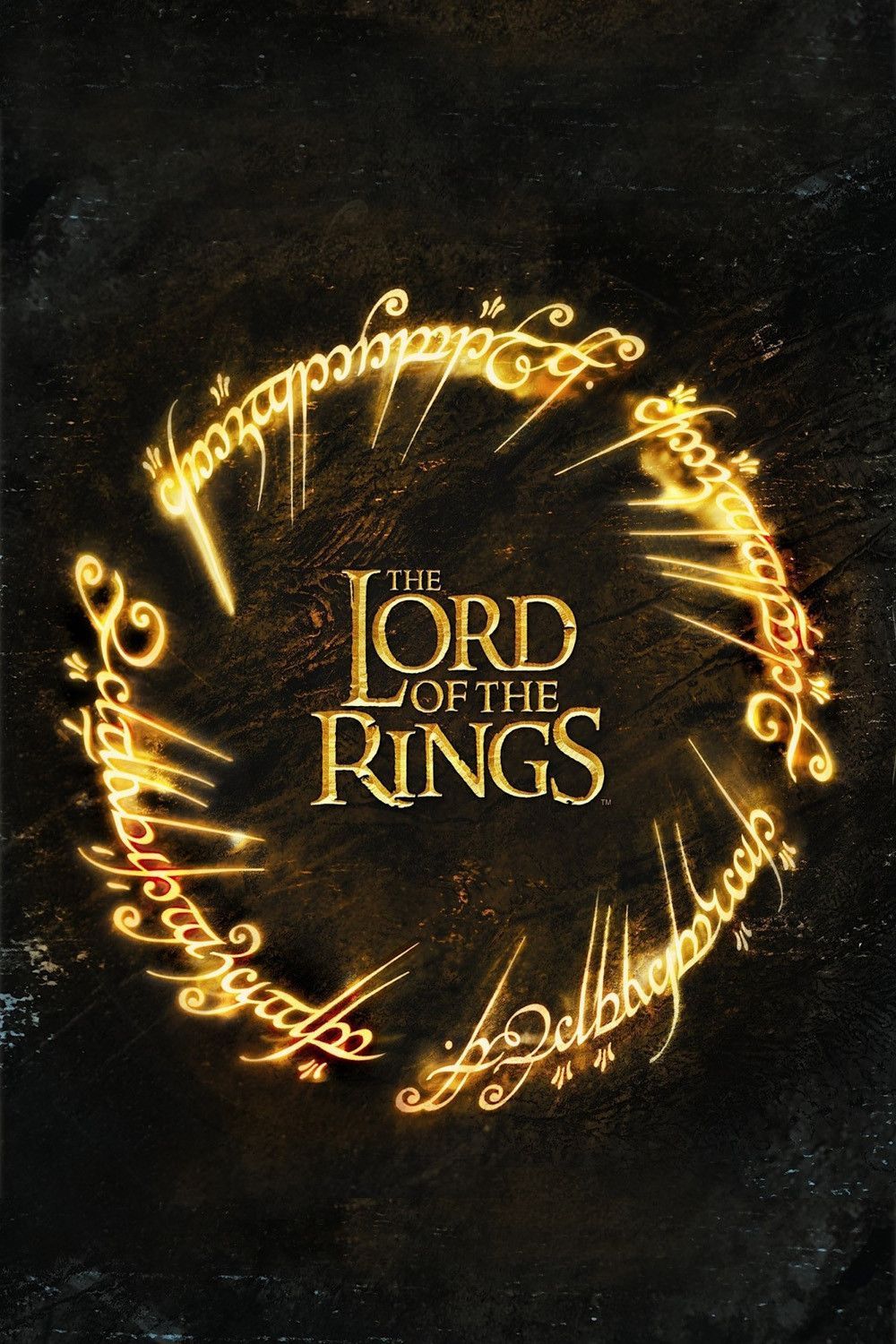Few The Lord of the Rings debates are as heated as who is more powerful when it comes to Morgoth vs. Sauron, but there would be a clear victor if Middle-earth’s two greatest villains ever battled. Though Sauron is the overarching nemesis in The Lord of the Rings, forcing the story’s heroes on a quest to destroy the powerful One Ring and defeat Mordor’s armies, he was once bound to a master of his own. Before Sauron ruled over Mordor, he was merely the general of the army commanded by Middle-earth villain Morgoth.
While Sauron and Morgoth have similar ambitions, there are significant differences between them, including who is the more powerful Lord of the Rings character. Sauron is the emphasis in J.R.R. Tolkien’s main trilogy, but Morgoth may be the more formidable force. Morgoth was the first to enact a reign of terror upon Middle-earth, with Sauron as his pupil. Sauron, however, is a terrifying villain in his own right, and ruled with an iron fist. The Morgoth vs. Sauron debate has raged for decades, but thanks to the extensive depth of Middle-earth lore, it’s easy to work out which Lord of the Rings villain would come out on top.
The Key Differences Between Morgoth And Sauron Explained
Sauron Developed His Power In Morgoth’s Shadow
Once known as Melkor, the Lord of the Rings villain Morgoth was the primary evil in Tolkien’s Middle-earth timeline, featured in The Silmarillion and The History of Middle-earth, and more recently touched upon in Amazon’s series The Lord of the Rings: The Rings of Power. Seeking to control Arda (the world) and Valinor (the Undying Lands, where Elves and eventually the Ring-bearers dwell in eternal peace), Morgoth exerted his influence as the first and strongest of the Valar to corrupt the world, bending it to his will. As Melkor, he was seen as a resplendent, noble, gifted politician, and irresistibly charming.
As Melkor became Morgoth and revealed his true nature thousands of years before Lord of the Rings, his corruption spread across the world, his proportions shifted, and he cast an ever-present threat over all, described as being impossibly tall and surrounded by a dark aura. In J. R. R. Tolkien’s world, few characters or creatures have been brave enough to challenge Morgoth in person.
On the other hand, Sauron grew in the shadow of his master, his ambition rising to meet that of Morgoth’s while he served him. Before he was Sauron, the character was known as Mairon, among the most powerful of the Maiar who served the Valar. When the Valar finally ousted Morgoth due to the War of Wrath at the end of the First Age, Sauron became the second Dark Lord to terrorize Middle-earth.
Sauron intended to use both trickery and overwhelming power to force Middle-earth to its knees, and his chief strategy was controlling the Rings of Power through the One Ring. Both Morgoth and Sauron managed to inflict significant damage upon the world and their enemies before their downfall, but Morgoth was undoubtedly the more powerful of the two.
Morgoth Would Beat Sauron Because Of How They Were Created
The difference between Valar and Maiar is key to understanding why Morgoth vs. Sauron would always end with Morgoth beating Sauron. The Valar were known as the Powers of Arda. Created by Eru Ilúvatar, the supreme being who created the world, the Valar were tasked with shaping and ruling the world. Melkor, who eventually became Morgoth, was the first and strongest of the Valar, but his view of what Arda should be differed greatly from Ilúvatar’s, so the rest of the Valar were constantly forced to combat his evil.
Powers differ for each Valar. For example, Manwë could control the winds of Arda, and Ulmo controlled the waters. Morgoth’s abilities before his ultimate fall included the power to curse those who opposed him, the ability to shape-shift and deceive his enemies, vast physical strength, and pyrokinesis, among others. Morgoth’s mere presence could corrupt that which surrounded him, eventually ensuring his evil spread far and wide.
Maiar such as Sauron, on the other hand, were created by Ilúvatar to assist the Valar in shaping the world. Each of the Maiar was assigned to one or more of the Valar, and their powers reflect their masters’ abilities. Their overall powers are quite similar to those of the Valar, such as shape-shifting, immortality, and augmenting the world around them as their masters do.
Though they are considerably powerful beings, the Maiar are lesser than the Valar simply because they were made to serve them. Sauron is not the only well-known Maia in The Lord of the Rings’ Middle-earth either. Before being known as Gandalf, the wizard was Olórin, just as Saruman was once the Maia known as Curumo and Radagast was once Aiwendil.
Who Was Smarter: Morgoth Or Sauron?
Both Lord Of The Rings Villains Were Incredibly Cunning
Morgoth constantly battled against his fellow Valar, shifting their labors and attention elsewhere so he could wreak havoc on the world in the meantime. He managed to destroy the two Great Lamps, which cast the world in darkness and allowed his corruption to spread. The destruction of the Lamps led to the Valar building Valinor, which gave Melkor/Morgoth virtually free rein over all of Middle-earth.
This afforded Morgoth time to push the continent into darkness, filling it with terrible creatures and ensuring decay everywhere. Sauron was installed in the fortress of Angband at this time, and there ensured that Morgoth’s evil would be carried out even after he’d been captured by the Valar and brought back to Valinor. Morgoth, as cunning as he was, managed to convince the Valar of his innocence after ages spent in captivity, leading to the corruption of the Elves, which was the beginning of Morgoth’s plan to amass an army and turn the races of Middle-earth against one another.
By imbuing the One Ring with a substantial part of his soul, Sauron gave the heroes of Middle-earth a way to defeat him once and for all.
Sauron, however, was extremely cunning as well. He used his shape-shifting abilities to deceive the Elves into forging the Rings of Power in The Lord of the Rings‘ Second Age, the time in Middle-Earth’s history when Amazon’s The Rings of Power is set. Sauron planned to use these Rings of Power to dominate the free peoples of Middle-earth.
Subsequently, Sauron secretly forged the One Ring in the fires of Mordor’s Mount Doom, infusing it with part of his soul to make it powerful enough to control the other rings. However, the alliance of Men and Elves thwarted his initial plan, and by imbuing the One Ring with a substantial part of his soul, Sauron gave the heroes of Middle-earth a way to defeat him once and for all.
In this case, Morgoth was more cunning than Sauron, as his rule and terror lasted for an unfathomable amount of time, and his corruption spread further than Sauron could ever muster. It could be argued, however, that in an emotional and political sense, Sauron was once superior to Morgoth. Morgoth became enslaved to his villainous desires, seeking only to crush his enemies and destroy everything good in the world. Sauron, at first, wasn’t interested in total devastation. He wanted dominion over Middle-earth by manipulating its people. Though Morgoth’s powers and cunning led to greater success, Sauron’s strength lay in his overall ambition to rule.
Was Sauron’s Army Bigger Than Morgoth’s?
Morgoth’s Army Makes Mordor’s Forces Seem Small
The Morgoth vs. Sauron debate is not just about who would win in a one-on-one fight, as both also had monstrous armies at their disposal. While Sauron’s Mordor in the Third Age may have been fearsome, the armies of Morgoth were superior. Sauron’s armies were undoubtedly great, filled with Orcs, Uruk-hai, Trolls, and Nazgûl mounted on Fellbeasts, but many other powerful beings that could have easily turned the tide during the War of the Ring weren’t at Sauron’s disposal.
Morgoth, the creator of all things evil within Middle-earth, not only corrupted the Elves and turned them into Orcs, but also controlled The Lord of the Rings‘ dragons, which were powerful and intelligent beasts, nearly invulnerable, and possessed overwhelming greed. The most famous of Tolkien’s dragons is Smaug, who is featured as the villain in The Hobbit.
Morgoth also created the Balrogs, which feature in The Lord of the Rings: The Fellowship of the Ring. Balrogs were Maiar who were seduced and corrupted by Morgoth, and they were mighty creatures. One single Balrog was all that was needed to drive the Dwarves from their home of Khazad-dûm, the greatest and most fortified dwelling of the Dwarves. The Balrogs and Dragons were not part of Sauron’s army, as they were nearly all driven from Middle-earth or destroyed by the time he rose to power again in the Third Age, and as such, his army would be at a huge disadvantage against Morgoth’s.
Though Sauron was undoubtedly a great and terrible villain in the Lord of the Rings movies, in the grand scheme of Arda and Middle-earth, Sauron doesn’t come close to Morgoth’s battle power. So powerful was Morgoth’s assembled collection of soldiers and beasts, only the Valar themselves were capable of vanquishing them from Middle-earth. For Sauron’s army, a Hobbit and his friends proved sufficient.
Neither Morgoth Nor Sauron Is The Most Powerful Being In LOTR
The Forces Of Good In Tolkien’s Mythology Wield Much Greater Power
Morgoth might be the historic big bad of Tolkien’s Middle-Earth, but he’s not the most powerful being in Lord of the Rings history overall. As is implied by the fact he created the Valar, the most powerful being in Tolkien’s mythology is Eru Ilúvatar, which means “the one, father of all” in Elvish. While it’s possible there are similar beings to Ilúvatar beyond Arda, it’s almost not worth speculating over their existence. Tolkien never wrote about them, and due to the religious symbolism, it’s safe to assume he intended Eru Ilúvatar to be a singular all-powerful deity.
Neither Tom Bombadil, Morgoth, nor Sauron is anywhere near as powerful as Eru Ilúvatar.
Tolkien’s work has deliberate and overt Christian parallels, and the earliest part of the story between Melkor and Eru Ilúvatar is heavily influenced by the history of God and the Devil in the Bible. Melkor being a fallen Valar is an obvious example of this, but many other indications of Tolkien’s faith can be interpreted from Middle-earth’s lore.
Due to Tolkien’s deliberate vagueness over the character, some believe that Tom Bombadil is the most powerful being in Tolkien’s mythology. The legend of Tom Bombadil in The Lord of the Rings is much bigger than the character, however. Tom is incredibly powerful and immune to the effects of the One Ring. He is not, however, more powerful than Morgoth. Whether he’d win against Sauron is a little more contestable, but there is no debate that neither Tom Bombadil, Morgoth, nor Sauron is anywhere near as powerful as Eru Ilúvatar, creator of Middle-Earth itself and the equivalent of God in The Lord of the Rings.
Does Morgoth Appear In The Rings Of Power?
Amazon’s Series Has Shown Morgoth In Flashbacks
Since The Rings of Power takes place thousands of years before the original series, speculation initially mounted over whether Morgoth could make an appearance on the Amazon Prime TV show. While he does feature to an extent, Morgoth’s cameo in The Rings of Power is very small. During the introductory sequence in The Rings of Power‘s very first episode, a shadow depicting Morgoth’s shape is shown over the Two Trees of Valinor to symbolize their destruction. This silhouette represents the clearest appearance of Morgoth in any live-action The Lord of the Rings adaptation thus far.
Morgoth – his armor, at least – gets a minute part in The Rings of Power season 2 when a flashback scene shows Adar stabbing Sauron with Morgoth’s crown. The crown then reappears in The Rings of Power‘s main Second Age timeline, much to the shock of Galadriel.
At some point, future seasons of Rings of Power could sprinkle in additional flashbacks set during the height of Morgoth’s reign of terror. Having already shown the War of Wrath and Adar killing Sauron, any flashback set between those two points would surely demand some physical appearance from Morgoth himself. Perhaps, now that his crown is in play, The Rings of Power will peel back some of its history, when it carried the Silmarils while sitting atop its master’s head. The Rings of Power certainly could increase Morgoth’s presence, but that would come at the risk of diminishing the aura of mystery and intrigue that surrounds Tolkien’s most evil creation.
Tolkien’s Final Battle Truly Confirms Morgoth Was The Strongest Villain, Not Sauron
The Dagor Dagorath Reveals Who The True Villain Really Was
During early versions of The Silmarillion, Tolkien wrote about a prophecy known as the Dagor Dagorath. This would have been a battle taking place at the very end of Middle-earth’s timeline in which the forces of good and evil clash one final time, and the world would be remade and renewed in the aftermath. The prophecy foresaw that Morgoth would escape his eternal prison, cast darkness across the world, and challenge the Valar all over again. The full force of Valinor would rise to meet this challenge in the biggest battle Arda had ever witnessed.
Morgoth could never be overcome by mortals and Elves, no matter how many Sam Gamgees stood at their side.
It is hugely significant that, during this one battle to rule them all, Morgoth would lead the charge for the bad guys, whereas Sauron gets nary a mention in the Dagor Dagorath. Casting aside the mountains of other evidence proving Morgoth was considerably more powerful than Sauron, Tolkien’s final prophecy concerning the fate of Middle-earth could not be clearer. No matter how powerful Sauron became in the Second Age, then again in the Third Age, he was just a rogue lieutenant beneath Middle-earth’s real villain.
It is certainly curious that, despite The Lord of the Rings‘ status as Tolkien’s most well-known work by a huge distance, the story’s villain represents just a flicker of the true wickedness hiding behind the Door of Night and waiting to pounce. The point, perhaps, is that Morgoth could never be overcome by mortals and Elves, no matter how many Sam Gamgees stood at their side.
Sauron, on the other hand, presented The Lord of the Rings with an enemy who could feasibly be surmounted. The Fellowship was not ridding Middle-earth of evil altogether in The Lord of the Rings, because such a thing cannot be possible. The heroes merely pushed back evil’s servants.
